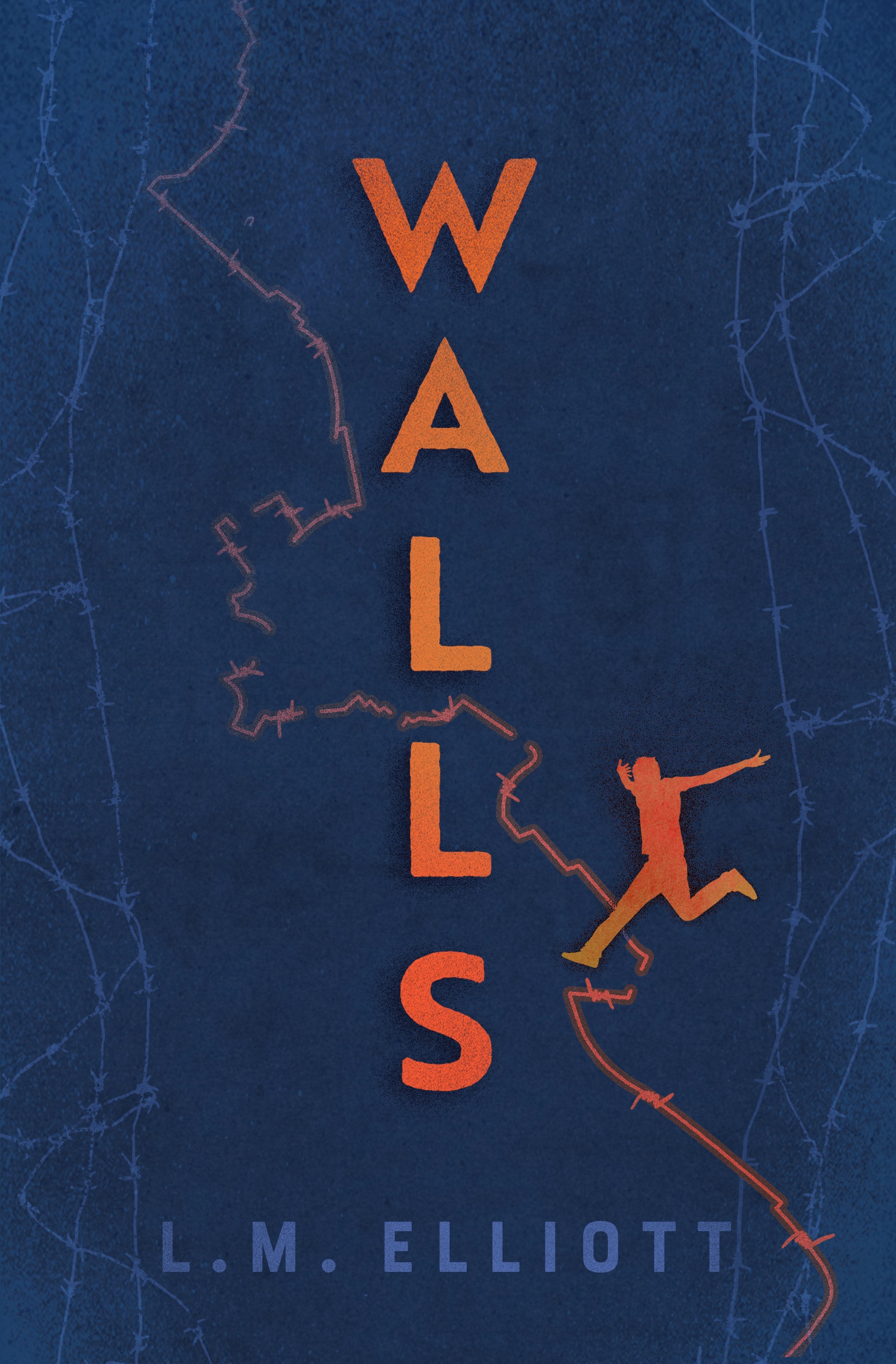c.2021, Algonquin $19.95 / higher in Canada 352 pages
Hold on.
Get a good grip on that climbing system and don’t let go. Hang by your fingertips, swing your legs and catch your feet on the next climbing hold so you can pull yourself up. If you fall, your harness will catch you but that’s no fun! You want to conquer this challenge but, as in the new novel “Walls” by L.M. Elliott, be careful where you step.
At this stage in his life, fifteen-year-old Drew McMahon was used to moving.
That’s what “Army brats” did: they moved wherever their father’s next assignment took them. This move to Berlin was the sixth one for Drew and his sisters, and it was the most daunting of them all. Drew didn’t speak German very well, he didn’t know anybody, and there were more rules in Berlin than at any other military base he’d ever lived on.
It was 1960; Cold War tensions between the Americans and the Russians were high and Berlin was Ground Zero, making it a dangerous place to be. It didn’t help that Drew’s mother insisted that he get to know a long-lost cousin who lived on the East Side, the communist side. Matthias was the same age as Drew but after meeting him, Drew could tell that Matthias firmly believed in Russian policy.
Drew’s father was glad he’d been deployed in Germany, but Drew worried that a connection with Matthias or any East Berliner might hurt his Dad’s career.
Yet, as the McMahons settled in and time passed, Drew began to get a good feeling about his cousin. Matthias was funny and kind and he was brave enough to dance once (forbidden by the Russian authorities) and to enjoy American music (likewise forbidden). He followed American politics and world affairs, and Drew was also impressed by Matthias’ diplomacy: he was usually able to defuse tense situations when the Russian police were around.
And then the barbed wire rolled out and The Wall went up…
In a way, “Walls” is a hybrid.
Author L.M. Elliott uses a modified graphic-novel form to establish reality for young readers through a series of drawings and pictures of real events, placing them at the beginning of each chapter. This gives young readers a point of reference and culture, which works nicely to remind them that what they’re about to read is built around history. It helps them to keep in mind the world as it was when the wall went up.
Kids who needs such reminders will be glad they’re there: the history parts hold attention when the fictional story occasionally slows. Parts of the body of the novel make a point, but it takes awhile; other parts feel almost belabored. Sharp-eyed readers may also spot the occasional shred of modern language, which almost ruins the atmosphere of this incredible novel for readers ages 12-and-up.
Almost – but not quite – because the sprint that this tale takes to a believable and heartbreaking ending makes every bump worth it. Absolutely worth it, so get “Walls,” and hold on.


